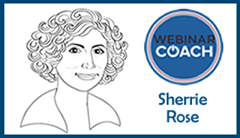Clarity Is Power

“Everyone hears only what he understands.”
– Goethe, scientist and and philosopher
Eliminate any confusion. Get clear before you share your message.
CLARITY: If you care about your audience, take the time to clarify your message and make it concise. You want to convey ideas that are effortless to recall. Keep a F.A.M.E. example in mind.
If your audience can’t repeat it, they didn’t get it. Don’t let that happen.
“Clarity Trumps Persuasion.”
-Flint McGlaughlin
To get clarity, you must consistently set aside time to think. To be with yourself. And to really dig deep down into the depths of your soul.
Kevin says, remind yourself why you really care about the things you care about. What you’re really doing. And what you’re doing it all for.
This is what will allow you to crystallize the true power and potency of your work.
Make it a point to come back to this practice over and over again.
It will allow you to distill the essence of what you do in clear, simple, and powerful ways.
The reason it’s so important to come back to this practice over and over again is because as we begin to express the essence of our work, it begins to evolve and take form.
It’s really easy and seductive to over-identify with the forms that it takes.
The structures.
The offerings.
The people.
The models.
The pricing.
The packaging.
The deliverables.
Just remember one thing:
If you’re confused on what to do next…
Base whatever you’re doing next on the true power and potency of your message.
That’s the only thing that truly sets you apart from everyone else.
Don’t get lost in the strategy or tactics.
Message comes first.
The strategy and the tactics come later.
Make sure you always place them in the right order.
After all, the strategy and tactics are just tools.
Your message is your true power. The hook, marketing idea, message must speak to your audience. Get clarity before your telegraph your transmission.
For webinars, clarity starts with the clear intention of your invitation on the registration page. Guide the thought process of your webinar guests to one conclusion: the point of action, which is to take you up on your offer. The journey is both aural and visual. You want people to remember, repeat and share your message.
Clarity is the quality of being easily understood, seen, or heard. In communication, it allows ideas to be grasped without confusion or misinterpretation. A clear message does not require excessive effort to decode; it reaches the listener or reader directly and without unnecessary complication. Whether spoken or written, clarity enhances the impact of communication by ensuring that the intended meaning is received accurately.
In writing, clarity stems from the deliberate use of precise words, straightforward sentence structures, and logical flow. Writers who prioritize clarity avoid vague language and tangled syntax. They select words that match their audience’s level of understanding, using familiar terms and defining any necessary jargon. Punctuation also plays a role, guiding the reader through the intended rhythm and structure of the message. Paragraphs are organized in a way that guides the reader from one idea to the next, allowing for a seamless progression of thought.
In speech, clarity involves more than just the words used. Tone, pace, and pronunciation all contribute. Speaking too quickly or using overly complex vocabulary can obscure meaning. A clear speaker modulates their voice, uses pauses effectively, and pays attention to their audience’s reactions, adjusting as needed to ensure understanding. In both professional and casual settings, this form of expression fosters better relationships and reduces the risk of miscommunication.
Clarity also plays a key role in visual design. A well-designed interface or layout allows users to navigate and understand content with minimal effort. Elements are organized in a coherent way, labels are legible, and colors and fonts are chosen to enhance readability rather than distract. Clarity in design removes barriers between the user and their goals, making interactions intuitive and efficient.
In thought, clarity involves the ability to focus on what matters and to articulate one’s reasoning with coherence. Clear thinking requires discipline—the ability to sift through information, separate relevant details from distractions, and reach judgments that are well-grounded. People who think clearly are better equipped to make decisions, explain their reasoning, and solve problems effectively. This quality is often cultivated through habits such as reflection, careful listening, and the pursuit of understanding rather than merely reacting.
Clarity benefits both the originator and the recipient. It saves time, prevents errors, and promotes trust. It is not the result of simplification for its own sake, but of disciplined effort to ensure that meaning is not lost in delivery. In a world full of noise, striving for this quality in every form—speech, writing, design, or thought—is a mark of respect for others and a commitment to effectiveness.
See also: Benevolent Power, Benevolent Power Position




